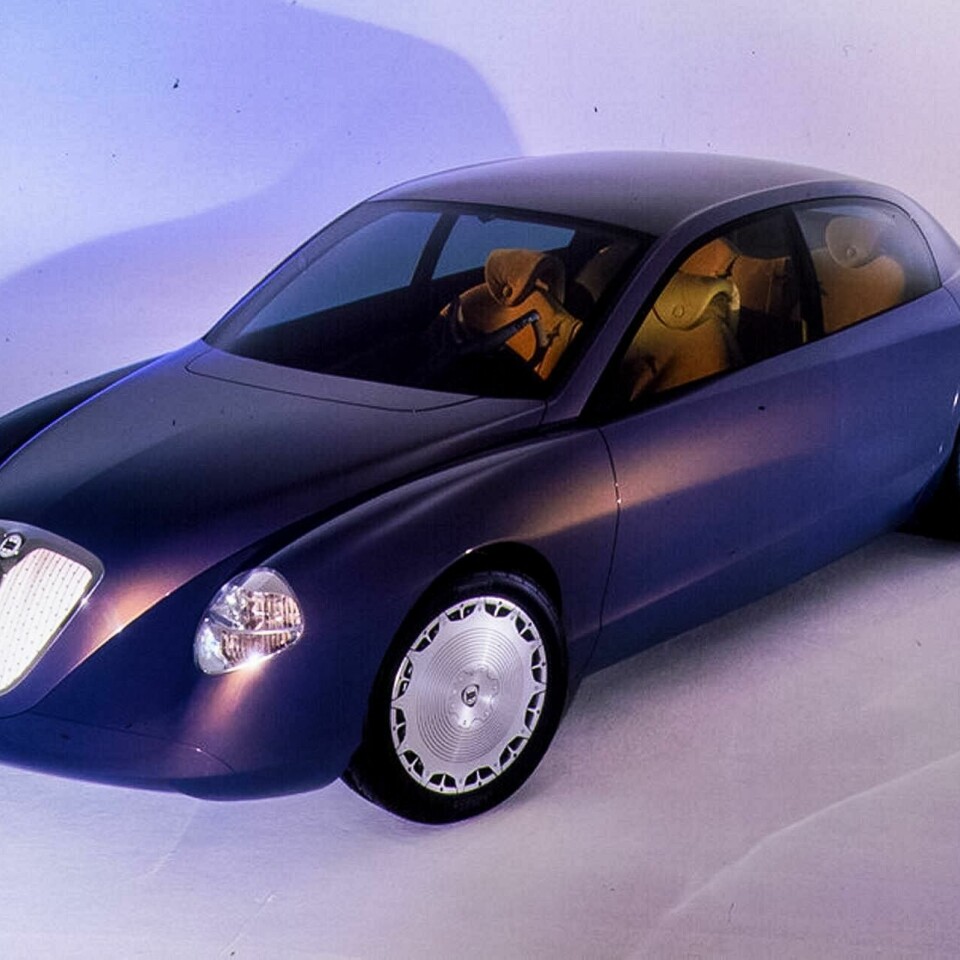
Concept Car of the Week: Lancia Dialogos (1998)
The Lancia Dialogos was a biomorphic, neo-classical vision of a next-millennium sedan
For any brand with a long heritage, there is always a tension between the past and future. The past is a rich source of design ideas, but can also hinder the need to drive the brand’s image and design language into the future. How do you reconcile the two?

Lancia was facing such a dilemma as the new Millennium approached; the company once renowned for its engineering excellence and individuality had become a rather mis-managed arm of the Fiat Group. But for the 1998 Turin motor show then head of Lancia design Michael Robinson and his team at Centro Stile were tasked with recapturing the brand’s essence in a concept car that would propel the brand into the 2000s.
The team was briefed to create a design that updated Lancia’s original mission – to build “prestigious, distinguished, comfortable cars” – for the 2000s, an era Lancia believed would usher in a “biodynamic philosophy, a new, different dialogue, and relationship between man and machine”.

Three exterior proposals – Tikal by Andrea Bassi, Pietro Camardella’s Arca and Agorà by Marco Tencone – were chosen to be developed into full-size in the summer of 1996. Soon after Tencone and Camardella’s designs were merged, with the latter in charge of its development.

The result was a boldly soft, streamlined form reminiscent of Lancias from the 1940s and 50s such as the Aurelia, Aprilia and Appia with a twist of Art Deco in its detailing.

What emerged from this process and was introduced at the 1998 Turin show was a luxury sedan that was at once both classic and boldly modern. Certainly unlike anything else offered by other carmakers, its soft form was given definition by taut but subtle character lines that added tailoring to the massing of the body, and kept the eye moving along its length.

If the exterior of the Dialogos, by Flavio Manzoni, was about the future vis-à-vis Lancia’s past heritage, the interior was simply all about the future. The overall intention was not to create an automotive interior so much as a mobile living room. “A passenger compartment conceived as an ideal microclimate and living room where one is free to enjoy stress-free driving,” according to Lancia.

Just accessing the car suggested a new driving and riding experience. Traditional door handles were absent, instead drivers had their own ‘Ego-Cards’, which the car recognised as the it was approached. The suicide doors would swing open and its armchair-like driver’s seat swivelled to allow for a comfortable entry into the cabin. The seat automatically adjusted to the driver’s height, seat back angle, and other preferences, as well as the U-shaped steering wheel, which rested in the centre of the cabin parked. Interestingly, this allowed for a driver on the left or right – perfect for those trips across the English Channel.

Décor referred classic modern works by Charles Eames and Pierre Paulin and room ensembles by Saporiti Italia, but the emphasis was on developing an original Lancia luxury interior design language for the future. The front seats could be linked to create a sofa, or turned 180 degrees to face the rear passengers, while all were covered in chamois leather and suede. Door cards were of leather and wood, as was the flooring while the dashboard was formed of an experimental wood film applied to a soft resin core. The rear chairs each had a flat-screen television that could be stowed away when not in use, as well as tables for working.

The front end graphics and some details would inform the design of the production 2001 Lancia Thesis, but the need to share a platform with Alfa Romeo and the rather conservative brand management meant the results were less than convincing.

This was most evident inside and it’s interesting to view how the concept’s cabin seems as fresh today as it was two decades ago. The idea of a personalised mobile microclimate and a new relationship between man and machine dovetails neatly into the current debate about the autonomous car and future personal transportation, and still has resonance for automotive design both today and tomorrow.




